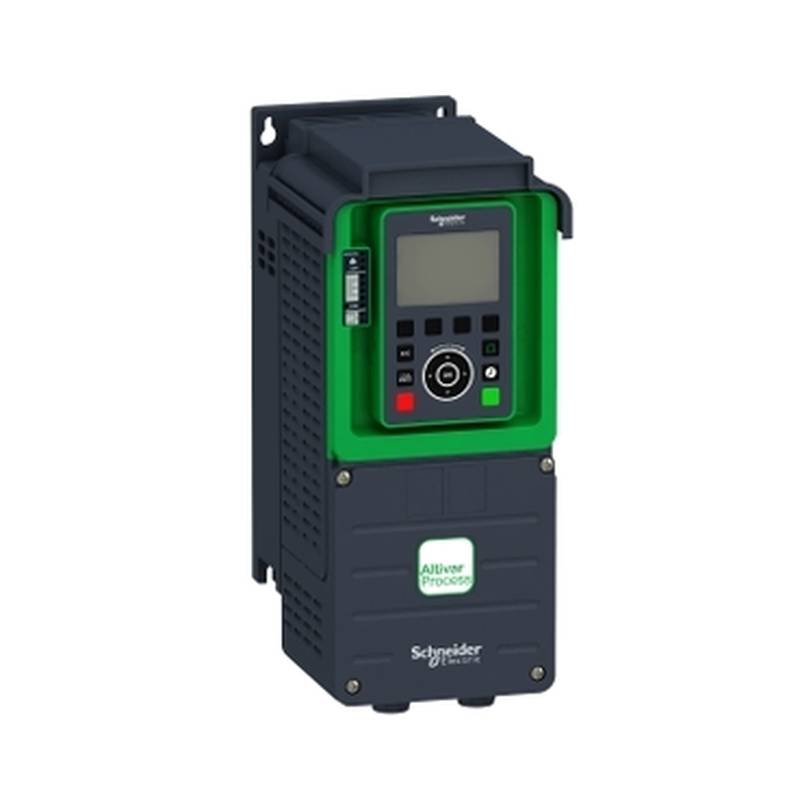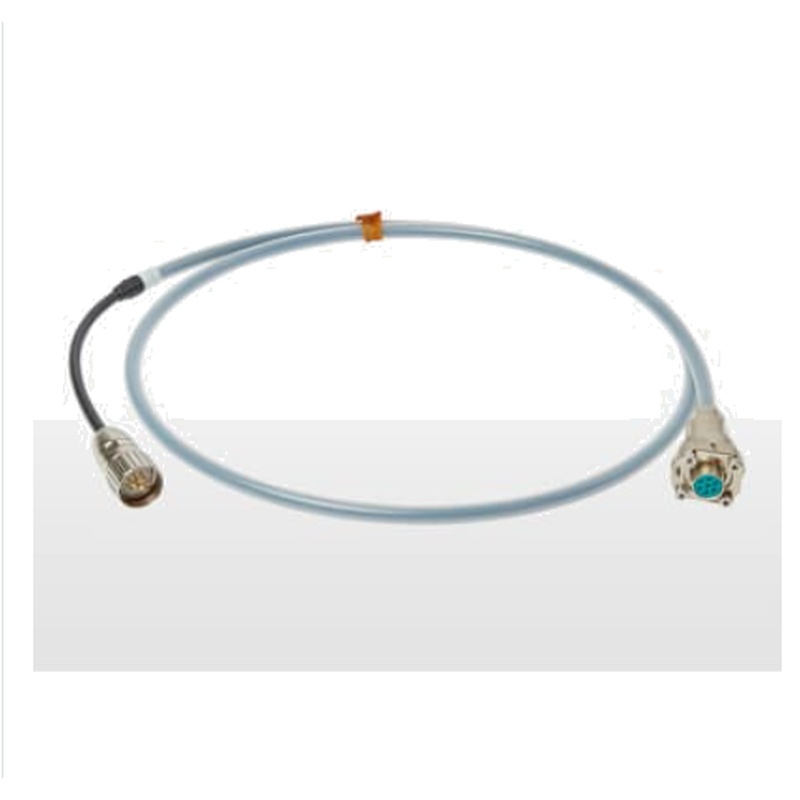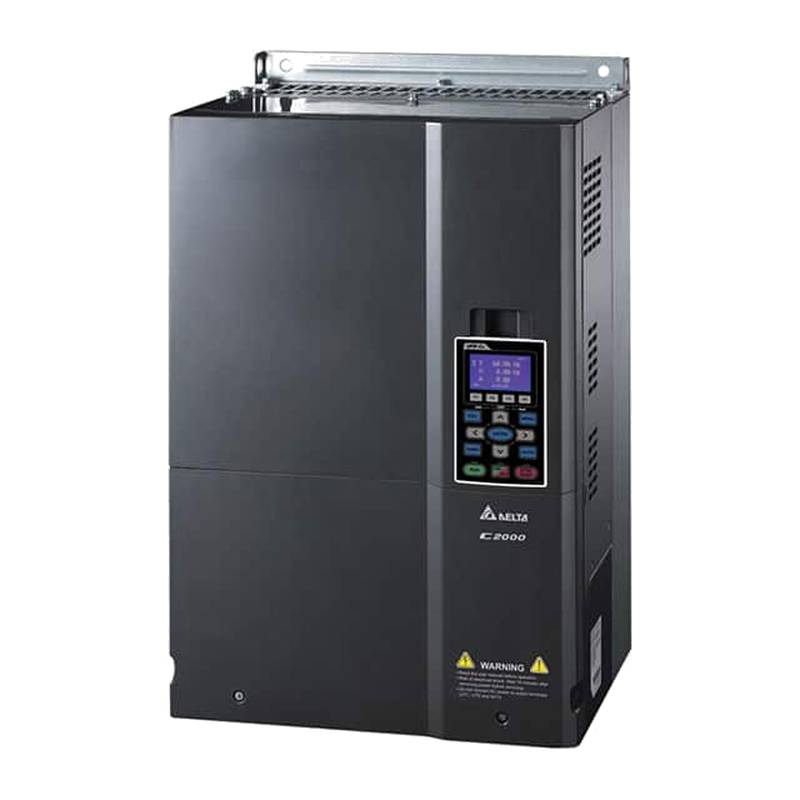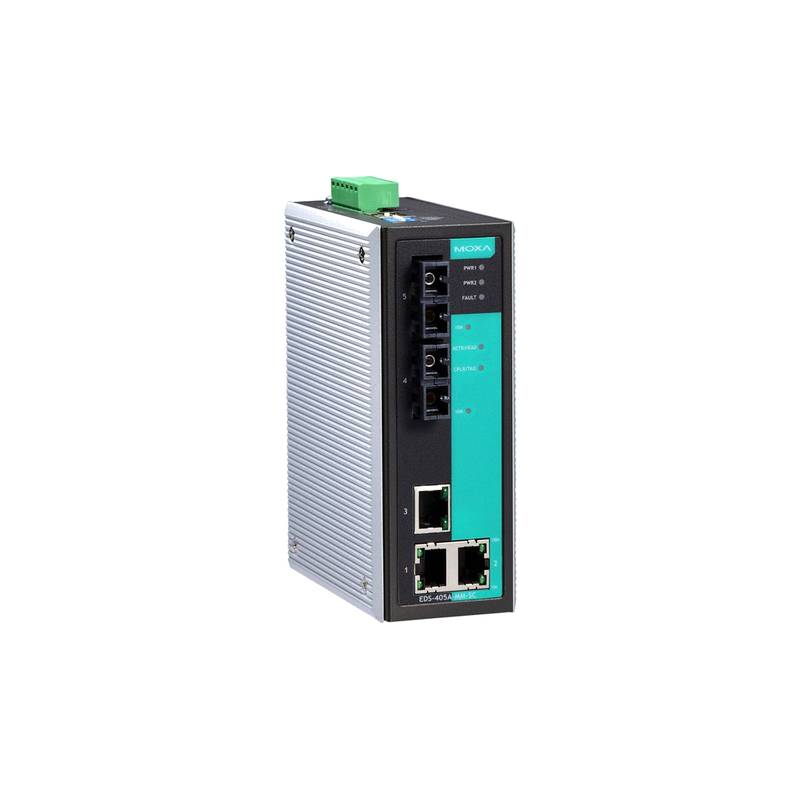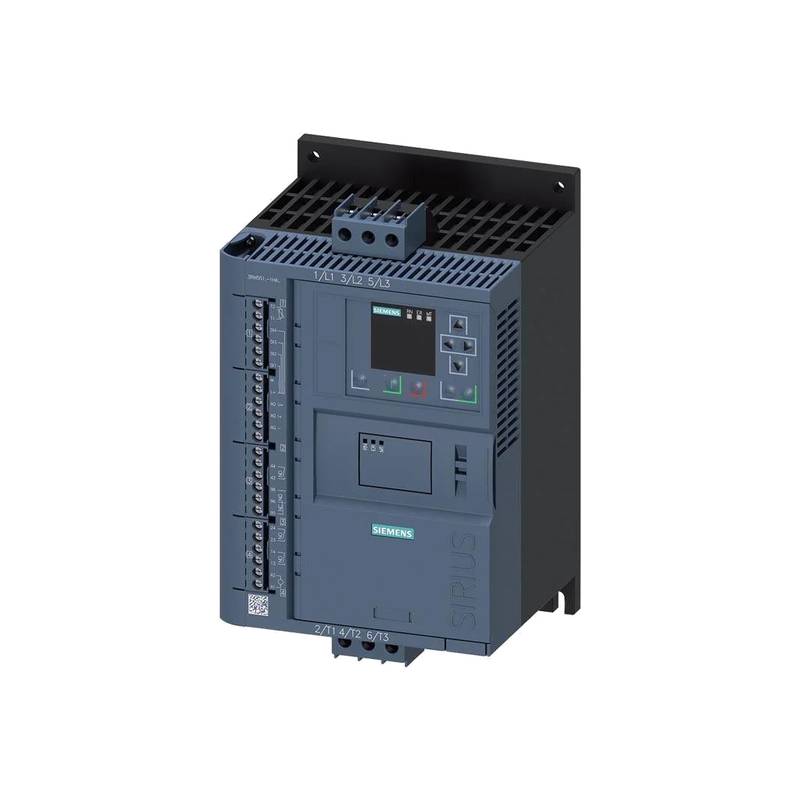
The Schneider Electric ATV930C13N4 is a high-performance variable frequency drive (VFD) engineered for demanding industrial applications. This advanced unit delivers exceptional motor control with a robust 132kW (175 HP) power rating and a continuous output current of 237A. Its key advantages include superior energy efficiency, enhanced process control through advanced algorithms, and a rugged design for reliable operation in harsh environments. Essential technical parameters such as its voltage rating of 400V, IP55 enclosure for dust and water resistance, and comprehensive communication options make it a leading choice for system integrators and plant managers seeking reliable and efficient motor control solutions.
Product Specifications
| Parameter | Value |
| :-------------------- | :---------------------------------------- |
| Manufacturer | Schneider Electric |
| Series | Altivar Process ATV930 |
| Model Number | ATV930C13N4 |
| Rated Power | 132 kW (175 HP) |
| Rated Continuous Current | 237 A |
| Input Voltage | 400 V |
| Output Voltage | 380-415 V |
| Enclosure | IP55 |
| Dimensions (H x W x D) | 700 mm x 400 mm x 374 mm (approx.) |
| Weight | 51 kg (approx.) |
| Operating Temperature | -15°C to +50°C (without derating) |
Core Features & Market Positioning
The Schneider ATV930C13N4 distinguishes itself through its advanced motor control capabilities, offering precise torque and speed regulation essential for optimized process performance. Its robust design, featuring an IP55 enclosure, ensures durability and reliable operation even in dusty and wet industrial settings, positioning it as a premier solution for challenging environments. The drive's integrated safety functions, including safe torque off (STO), enhance operational safety and reduce the risk of accidents. Furthermore, its flexibility in communication protocols, supporting options like Modbus, Profibus, and Ethernet/IP, allows seamless integration into various automation architectures, making it a highly versatile and competitive offering in the industrial VFD market.
Key Application Scenarios
This powerful VFD is ideally suited for heavy-duty applications requiring robust motor control and energy savings. Common scenarios include pump and fan control in water treatment plants, where precise flow and pressure management are critical, and the ATV930C13N4's sophisticated algorithms optimize energy consumption. In the material handling sector, it provides smooth acceleration and deceleration for conveyor systems, reducing mechanical stress and improving throughput. For the mining and metals industry, its rugged construction and high power output make it suitable for driving crushers, mills, and hoists, ensuring continuous operation under extreme conditions.
Practical System Integration Guidance
Integrating the SCHNEIDER ATV930C13N4 into existing systems is streamlined by its modular design and comprehensive documentation. Proper wiring is crucial; ensure the power supply is correctly connected to the line terminals and the motor to the load terminals, adhering to torque specifications for secure connections. Grounding the drive and motor effectively mitigates electrical noise and enhances safety. For initial setup, the intuitive graphical interface allows for quick parameter configuration, including motor data entry and speed reference selection. Advanced integration often involves setting up communication protocols via optional network cards to enable remote monitoring and control, allowing for seamless integration into SCADA or PLC systems.
Operation and Risk Mitigation
Operating the SCHNEIDER ATV930C13N4 demands adherence to safety protocols to mitigate risks. Always ensure the drive is powered down and safely discharged before performing any maintenance or wiring adjustments. Familiarize yourself with common fault codes, such as "Overcurrent" (often related to sudden load changes or motor issues) or "Earth Fault," and consult the manual for specific troubleshooting steps. Implementing the built-in safety features, like Safe Torque Off (STO), is paramount for preventing unexpected motor starts during maintenance. Regular inspection of power connections and cooling vents ensures optimal performance and prevents overheating, a common cause of drive failure.
Scalability & Long-Term Value
The Altivar Process ATV900 series, including the ATV930C13N4, is designed for long-term value and scalability. Its compatibility with Schneider Electric's EcoStruxure™ platform facilitates integration into broader Industrial Internet of Things (IIoT) ecosystems, enabling advanced data analytics, predictive maintenance, and remote diagnostics. This connectivity allows for enhanced operational efficiency and reduced downtime. The modular design of the ATV930 series also supports future upgrades, such as adding communication modules or I/O extensions, without requiring a complete system overhaul, ensuring that the drive can adapt to evolving plant requirements and technological advancements.
FAQs
What are the main benefits of using the Schneider ATV930C13N4?
It offers superior energy efficiency by precisely matching motor speed to load demands. The drive provides enhanced process control, improving product quality and consistency. Its rugged IP55 rating ensures reliable operation in harsh industrial environments.
This VFD minimizes mechanical stress on equipment through smooth starts and stops. Integrated safety features like STO enhance workplace safety. Advanced communication options enable seamless automation integration.
The ATV930C13N4 reduces operational costs through optimized energy usage. Its durability extends equipment lifespan and reduces maintenance needs. It supports IIoT integration for future-proof smart factory operations.
How do I select the correct motor for the ATV930C13N4?
Ensure the motor's rated power (132kW) and voltage (400V) match the drive's capabilities. Verify that the motor's nominal current is below the drive's continuous output current (237A). Consider the motor's efficiency rating for optimal energy savings.
Check the motor's service factor and starting torque characteristics against application requirements. Ensure the motor's insulation class is appropriate for the VFD's switching frequencies. Confirm the motor's protection rating (e.g., IP rating) suits the operating environment.
Consult the ATV930C13N4 manual for specific motor compatibility guidelines and recommended motor types. Proper motor selection is key to unlocking the drive's full performance and longevity.
What are common troubleshooting steps for ATV930C13N4 faults?
First, identify the specific fault code displayed on the drive's HMI. Consult the product manual to understand the meaning of the code. Common faults include overcurrent, undervoltage, and earth faults.
For overcurrent, check for motor or load issues, or if the acceleration time is too short. For earth faults, inspect motor windings and cable insulation for damage. Ensure proper grounding of both the drive and motor.
Verify all power and motor connections are secure and correctly wired. Check ambient temperature and ventilation for overheating issues. If issues persist, contact Schneider Electric support.
Can the ATV930C13N4 be used in hazardous areas?
The standard ATV930C13N4 with an IP55 rating is not designed for hazardous locations. For such environments, explosion-proof or intrinsically safe motor and drive solutions are required. Consult specific ATEX or similar certifications.
Schneider Electric offers specialized drives and enclosures that comply with hazardous area standards. These often involve additional safety barriers and specific motor types. Always verify the suitability for Zone 1, Zone 2, etc.
Using a non-certified drive in a hazardous area poses significant safety risks and can violate regulations. Always consult with safety engineers and the product documentation for certified solutions.
What communication protocols does the ATV930C13N4 support?
The ATV930C13N4 natively supports Modbus serial communication (RTU/ASCII). It can be expanded with optional communication cards for various industrial networks. These include Profibus DP, DeviceNet, and Ethernet-based protocols.
Commonly supported Ethernet protocols via add-on cards are EtherNet/IP and Modbus TCP. This flexibility allows integration into diverse automation systems, from simple PLC control to complex SCADA networks.
Selecting the correct communication card is crucial for seamless integration. Ensure the chosen protocol matches your existing plant network infrastructure for efficient data exchange.
How do I perform an initial parameter setup for the ATV930C13N4?
Navigate to the "Parameter" menu on the drive's keypad or HMI. Select "Quick Setup" or "Guided Setup" for a streamlined initial configuration. Enter basic motor data like nominal voltage, current, and power.
Configure the speed reference source (e.g., keypad, analog input, network). Set acceleration and deceleration ramps to appropriate values for your application to avoid mechanical shock. Define the desired control mode (e.g., V/f, Sensorless Vector).
Save the configured parameters and perform a test run at low speed. Monitor drive behavior and motor performance closely. Adjust parameters as needed based on application feedback and performance requirements.
What is the maximum operating temperature for the ATV930C13N4?
The drive can operate without derating up to an ambient temperature of +50°C. Beyond this temperature, performance may be affected, and output current derating will be necessary. Always ensure adequate ventilation.
Operating the drive above its specified temperature limits can lead to premature component failure and reduced lifespan. It can also trigger thermal protection faults, causing process interruption.
For continuous operation above +50°C, consider forced ventilation solutions or selecting a drive rated for higher temperatures. Always adhere to the environmental specifications in the product manual.
How do I connect an external potentiometer for speed control?
Connect the potentiometer's wiper terminal to the analog input terminal designated for speed reference (e.g., AI1). Connect the other two potentiometer terminals to the drive's 10Vdc reference output and a common ground (0V) terminal.
Within the drive's parameter settings, configure the selected analog input (e.g., AI1) to accept voltage input for speed control. Set the input scaling to match the potentiometer's range (typically 0-10V) to the desired motor speed range (e.g., 0-50Hz or 0-60Hz).
Ensure secure connections and verify the potentiometer is functioning correctly before enabling drive operation. Test the speed variation across the full range of the potentiometer.
What safety features are included in the ATV930C13N4?
The drive includes Safe Torque Off (STO) as a standard safety function. STO prevents the motor from unintentionally starting, ensuring safety during maintenance or emergencies. This meets SIL 2 / PL d safety levels.
Other safety functions can be implemented through advanced safety option cards or parameter configurations. These might include safe speed monitoring, safe direction control, and emergency stop functions.
Properly configuring and integrating these safety features is critical for personnel and equipment protection. Always follow the safety guidelines outlined in the user manual.
How can the ATV930C13N4 contribute to energy savings?
By precisely adjusting motor speed to match the exact load requirements, the drive significantly reduces energy consumption compared to fixed-speed operation. This is particularly effective in variable torque applications like pumps and fans.
The drive's efficient power electronics minimize energy losses during conversion. Features like automatic energy savings mode optimize performance further, adapting settings to maximize efficiency under varying conditions.
Implementing regenerative functions, where available through optional modules or configurations, can recover energy from decelerating loads and feed it back into the supply, further enhancing overall energy efficiency.














